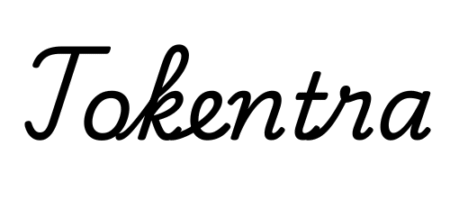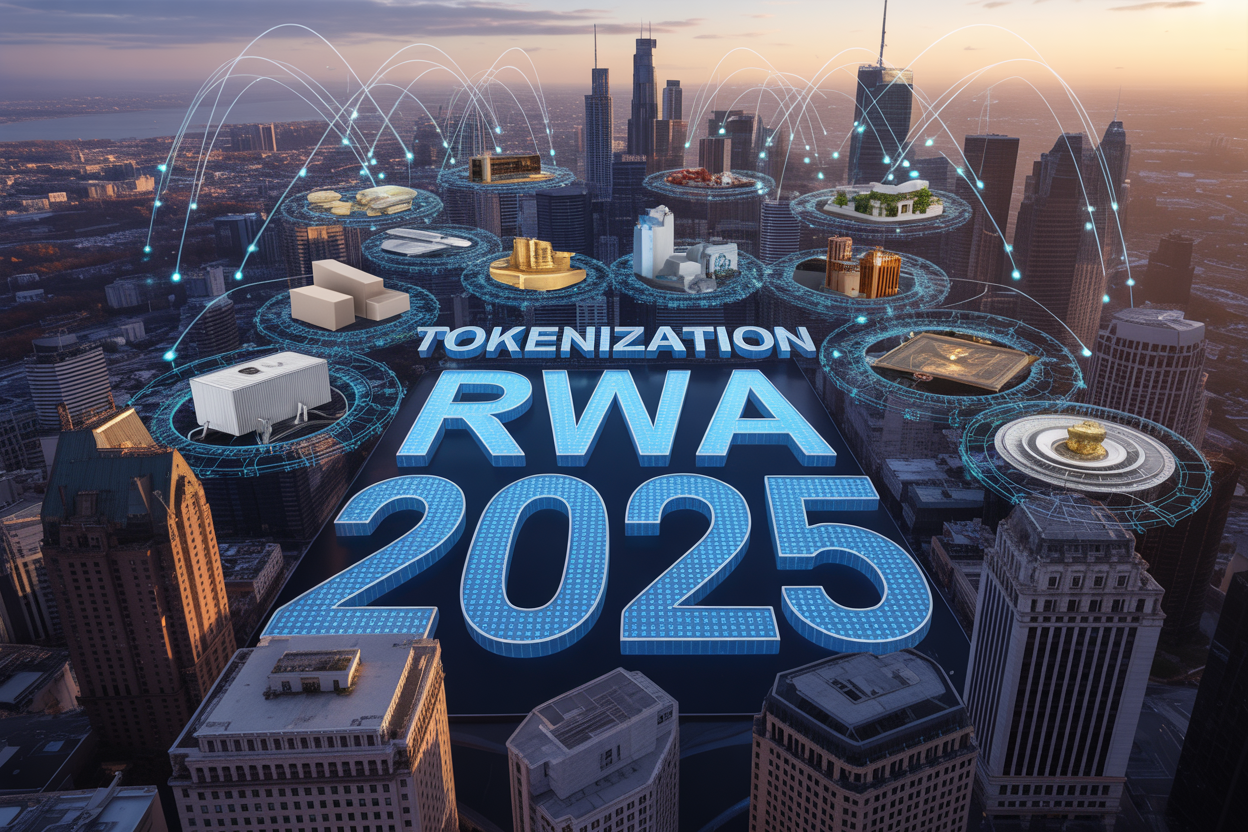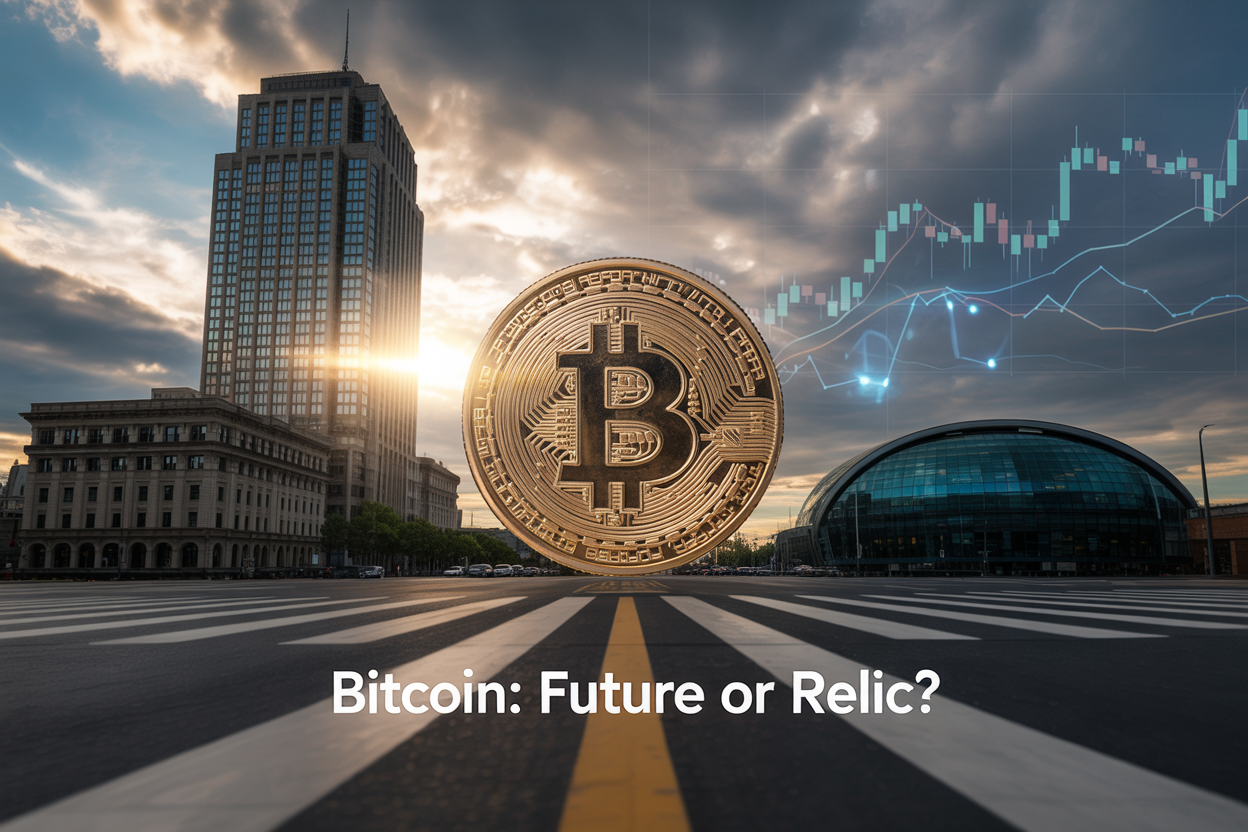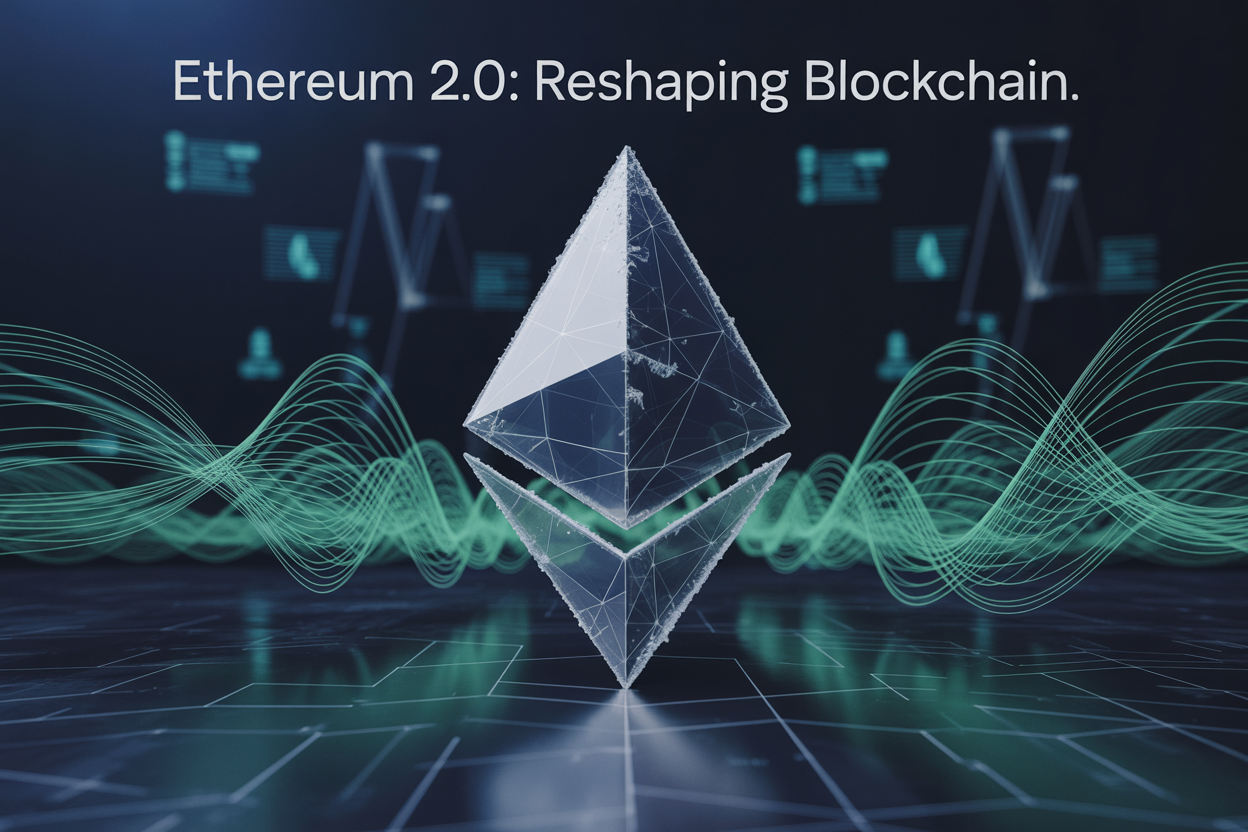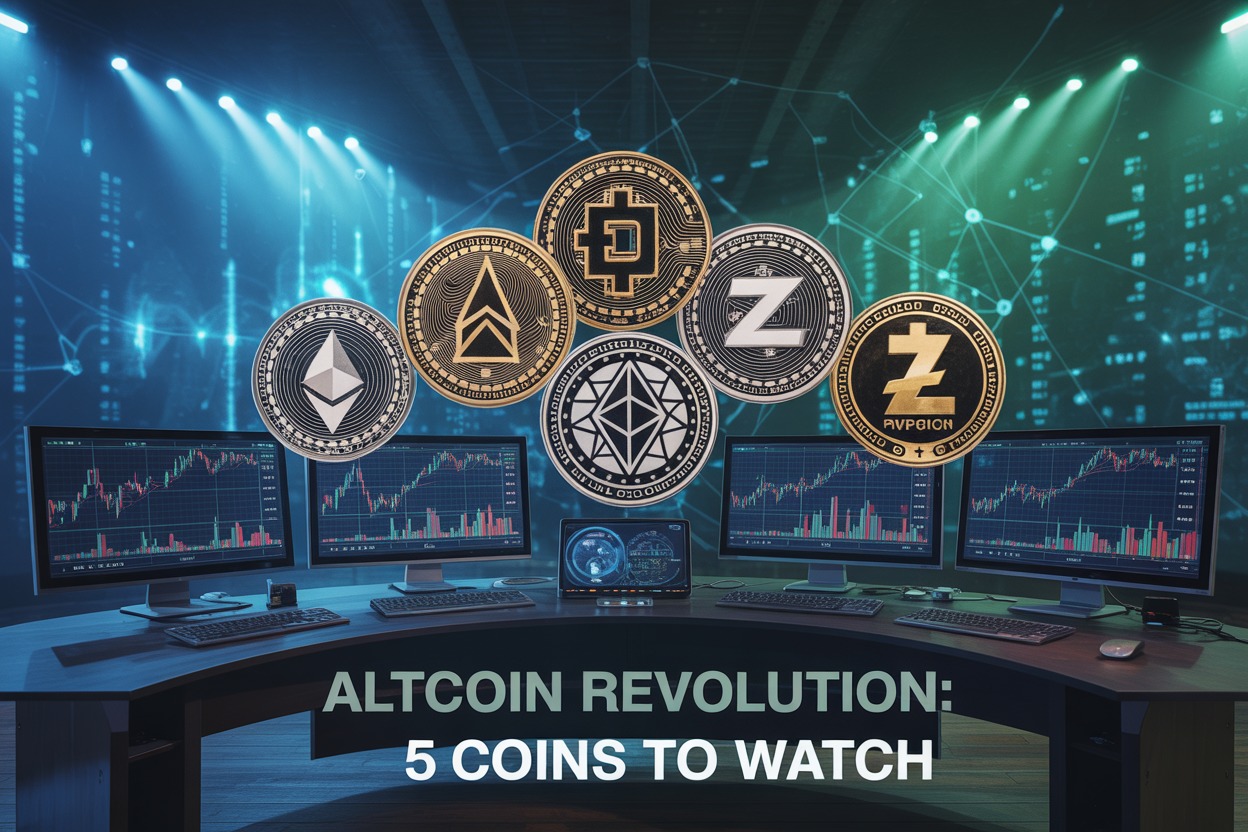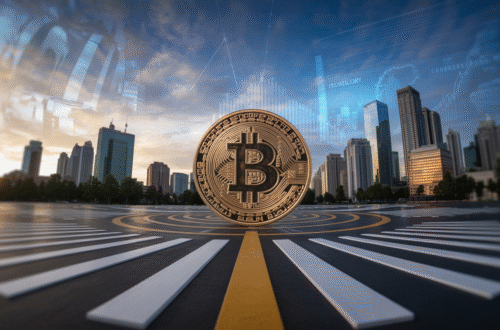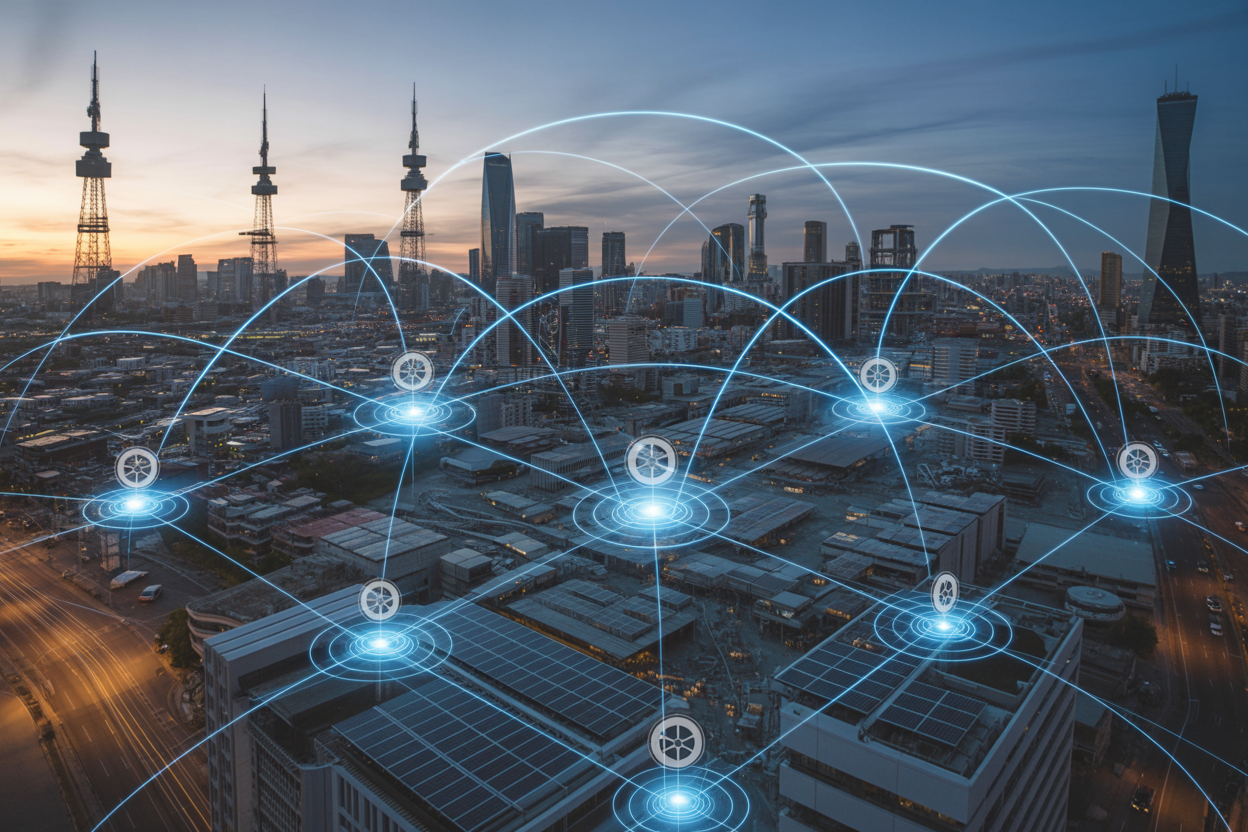Introduction
Real-world asset tokenization is transforming how we buy, sell, and trade physical assets in the digital world. This guide helps investors, business owners, and blockchain enthusiasts understand how RWAs will reshape markets by 2025. We’ll explore how traditional assets like real estate and commodities are moving on-chain, creating new investment opportunities with lower barriers to entry.
In this article, you’ll learn about the most promising RWA use cases across industries, the technical infrastructure making tokenization possible, and the regulatory hurdles that need to be overcome for mainstream adoption.
Understanding Real-World Assets (RWA) Tokenization

A. What are RWAs and why they matter in 2025
Remember when digital assets were just Bitcoin and a few altcoins? Those days are long gone.
In 2025, Real-World Assets (RWAs) have revolutionized how we think about ownership. RWAs are simply physical or traditional financial assets—real estate, commodities, bonds, art—brought onto the blockchain through tokenization.
Think of it as giving your house, gold bar, or company shares a digital passport. This passport (token) represents your ownership, but with superpowers: it’s divisible, transferable in seconds, and tradable 24/7.
Why does this matter now? Because we’re finally seeing what happens when the $900 trillion traditional asset market meets blockchain technology.
The impact? Mind-blowing. Imagine buying 0.01% of a Manhattan skyscraper with a few clicks. Or trading fractions of fine art while the original hangs in a museum. That’s happening right now.
B. The evolution of tokenization from 2020 to 2025
The RWA journey hasn’t been overnight. Back in 2020, tokenization was mostly proof-of-concepts and small-scale experiments.
2020-2021: Early adoption, mostly focused on simple assets like stablecoins backed by dollars.
2022-2023: The infrastructure phase. Legal frameworks developed. Major financial institutions started building tokenization platforms.
2024-2025: Explosion. Mainstream adoption driven by regulatory clarity and proven use cases.
The game-changer? Institutional money. BlackRock, JPMorgan, and other financial giants aren’t just participating—they’re leading the charge.
What changed wasn’t just the technology—it was trust. As legacy institutions embraced tokenization, so did everyday investors.
C. Key market statistics and growth projections
The numbers tell the story better than I ever could:
| Metric | 2020 | 2025 (Current) | 2030 (Projected) |
|---|---|---|---|
| Total RWA market cap | $4 billion | $16 trillion | $54 trillion |
| Daily trading volume | $10 million | $40 billion | $200 billion |
| Tokenized real estate | $0.5 billion | $4 trillion | $15 trillion |
| Institutional adoption | 2% of banks | 65% of banks | 90% of banks |
Most stunning is the velocity. The RWA market doubled every 8 months since mid-2023.
What’s driving this? Liquidity. Assets that once took months to trade now move in minutes.
D. Current regulatory landscape for tokenized assets
Gone are the wild west days. The regulatory picture in 2025 looks dramatically different from just a few years ago.
The turning point came when the SEC, EU, and Singapore’s MAS published comprehensive frameworks specifically for tokenized assets in late 2023.
Today’s landscape features:
- Clear asset classification systems
- Standardized tokenization processes
- Interoperable compliance protocols
- Cross-border recognition frameworks
The surprise winner? Switzerland. Their “Token Act” created the most comprehensive legal framework, attracting over $3 trillion in tokenized assets to Swiss-based platforms.
The regulations haven’t slowed growth—they’ve accelerated it. Institutional investors who once watched from the sidelines now have the certainty they needed to deploy capital at scale.
Transformative Use Cases Reshaping Industries

A. Real estate: Fractional ownership and global accessibility
The real estate market is undergoing a massive shift. Blockchain has kicked down the door, allowing everyday investors to own pieces of premium properties they couldn’t dream of accessing before.
Think about it – you can now own a slice of a Manhattan skyscraper for just a few hundred bucks. That’s game-changing.
What’s really cool is how this demolishes geographical barriers. An investor in Singapore can easily grab ownership in a Berlin apartment building without drowning in paperwork or dealing with currency conversion headaches.
Smart contracts are handling the messy stuff – rent distribution, ownership transfers, voting rights – all automatically and transparently. No more waiting 30 days for your rental income to clear.
And liquidity? That’s where things get really interesting. Traditional real estate might take months to sell. Tokenized property? You can trade your portion in seconds on digital exchanges that never close.
B. Debt markets: Bond tokenization and yield optimization
Bond markets have been stuck in the 1980s for too long. Tokenization is dragging them into the future, kicking and screaming.
The minimum investments for corporate bonds have typically locked out retail investors. Now? You can own $50 worth of a previously exclusive $500,000 bond. The democratization is real.
Smart contracts are automating interest payments down to the second – not quarterly or semi-annually like the old days. This means continuous yield accrual that compounds much more efficiently.
Secondary markets for bonds have exploded with tokenization. Bonds that previously sat in portfolios until maturity are now actively traded, creating price discovery and liquidity that traditional markets could only dream about.
Risk management has leveled up too. Investors can diversify across dozens of bonds instead of being stuck with a handful. The days of putting all your eggs in three or four baskets are over.
C. Commodities and natural resources on-chain
Commodities trading was once the playground of big firms with massive resources. Not anymore. Tokenization has blown the doors off.
Gold, silver, oil, wheat – these can now be fractionalized and traded without the hefty storage and insurance costs. A barrel of oil doesn’t have to sit in your garage (thank goodness).
The transparency is revolutionary. When you buy tokenized agricultural products, you can actually trace them from farm to table. No more mystery meat or questions about where your coffee beans really came from.
Supply chain financing has been transformed. Producers in developing markets can now tokenize their inventory before it even reaches port, accessing capital that would’ve been impossible before.
Most importantly, price manipulation is getting harder. With more participants and transparent on-chain trading, the old tricks don’t work as well. The playing field is leveling for everyone.
D. Art, collectibles, and intellectual property rights
The art world needed a shake-up, and tokenization delivered the earthquake.
Artists are now minting their work as tokens, allowing them to earn royalties automatically every time their piece changes hands. No more creating a masterpiece only to watch others profit from its appreciation.
Provenance – the history of ownership – is now unquestionable. Tokenized art comes with a permanent, tamper-proof record of everyone who’s ever owned it. Forgeries? Becoming a thing of the past.
Partial ownership has opened fine art to regular folks. You don’t need $100 million for a Picasso when you can own 0.01% of it for $10,000. Museums and collectors are tokenizing their collections, creating new funding models.
For intellectual property, musicians are tokenizing royalty streams, allowing fans to invest directly in songs they love. Imagine owning a piece of your favorite track and earning every time it streams.
E. Carbon credits and ESG assets
Carbon markets are finally getting the tech upgrade they desperately needed.
Tokenized carbon credits solve the double-counting problem that’s plagued environmental markets. When a credit is used to offset emissions, it’s burned on-chain – permanently and verifiably.
The verification process for environmental projects has become radically more efficient. IoT sensors connected to blockchain networks provide real-time data on carbon sequestration or emissions reduction.
Companies can now prove their environmental claims with immutable records. No more greenwashing when your sustainability efforts are tracked on a public ledger that anyone can audit.
For investors, ESG assets have become truly liquid. Green bonds, renewable energy credits, and sustainability-linked loans can be traded 24/7 on digital exchanges, creating price discovery and transparency never before possible.
The social impact is real – communities protecting forests or developing renewable energy can tokenize and sell their environmental benefits directly, cutting out the middlemen who’ve historically taken the lion’s share.
Technical Infrastructure Powering RWA Tokenization

Blockchain Protocols Optimized for Real-World Assets
The tokenization game is changing fast. Traditional blockchains like Ethereum weren’t built with physical assets in mind. They’re slow, expensive, and lack the specialized features needed for RWAs.
Enter the new wave of purpose-built protocols. Chains like Avalanche, Polygon, and Algorand now offer subnets and application-specific chains tailored for RWAs. These solutions provide the throughput needed for large-scale asset management while keeping gas fees reasonable.
What makes these protocols special? For starters, many incorporate native compliance tools – think automated KYC/AML checks at the protocol level. Some even offer programmable transfer restrictions that mirror real-world regulations.
Smart contracts are evolving too. We’re seeing specialized templates for different asset classes – real estate contracts with built-in rental payment distribution, carbon credit tokens with verification mechanisms, and invoice financing tokens with automated payment schedules.
Oracle Networks and Reliable Price Feeds
You can’t tokenize real-world value without reliable on-chain data. That’s why oracle networks are the unsung heroes of RWA tokenization.
Chainlink and Band Protocol now offer specialized RWA data feeds that bring everything from property valuations to commodity prices on-chain. These aren’t your basic crypto price oracles – they’re sophisticated networks pulling from multiple professional valuation sources.
The real innovation? Consensus-based valuation mechanisms that combine on-chain governance with professional appraisals. Some platforms now use token-incentivized appraisal networks where professionals stake tokens on their valuations, creating skin-in-the-game accuracy.
Digital Identity Solutions and Compliance Frameworks
RWAs live at the intersection of TradFi and DeFi, making identity and compliance non-negotiable.
Self-sovereign identity (SSI) solutions are becoming the backbone of compliant RWA platforms. Projects like Polygon ID and Civic allow investors to verify credentials without exposing personal data. The verification happens on-chain, but the sensitive details stay private.
Cross-chain compliance layers are emerging too. These frameworks allow verified identities to move between different RWA platforms without redundant KYC processes.
What’s game-changing is how these systems marry privacy with compliance. Zero-knowledge proofs let users prove their eligibility (accredited investor status, jurisdiction, etc.) without revealing specific details.
Custody Innovations and Security Measures
The million-dollar question: “Who holds the keys?”
Multi-party computation (MPC) is revolutionizing RWA custody. Instead of single private keys, MPC splits control across multiple parties – no single point of failure.
For physical assets, we’re seeing sophisticated digital twin models. Each tokenized asset gets a digital representation with embedded IoT connectivity. Real estate tokens connect to smart locks and monitoring systems. Commodity tokens link to GPS-tracked shipping containers.
Smart contract insurance is growing too. Protocols like Nexus Mutual now offer specialized coverage for RWA tokenization contracts, adding another security layer.
The cutting edge? Recovery mechanisms that balance security with practical usability. Social recovery systems let users designate trusted contacts who can help recover access through distributed consensus – no more permanently lost assets.
Financial Implications of RWA Tokenization
Enhanced liquidity for traditionally illiquid assets
The tokenization revolution is turning the investment world upside down. Think about it – that multi-million dollar commercial property downtown? Previously, you’d need serious capital to get even a small piece of it. Now? It’s being sliced into digital tokens that you can buy for a few hundred bucks.
This isn’t just convenient – it’s game-changing for markets that have always been stuck in the mud. Real estate, fine art, and private equity have traditionally been locked away from average investors and stuck in paperwork hell when someone wants to sell.
Tokenization blows these barriers apart. Suddenly that illiquid vineyard investment can be traded as easily as a stock. The numbers don’t lie – fractional ownership has already increased trading volume for luxury properties by over 300% in pilot programs.
Reduced transaction costs and settlement times
Remember when transferring property meant drowning in paperwork for weeks? Those days are numbered.
Smart contracts are eliminating the middlemen who’ve been skimming off the top for decades. Title transfers that used to cost thousands now execute for pennies. Settlement times? Try minutes instead of months.
The real kicker is what this means for cross-border transactions. International real estate deals that once involved multiple banking systems, currency conversions, and legal frameworks now settle nearly instantly on-chain.
For businesses, this efficiency translates directly to the bottom line:
| Traditional Process | RWA Tokenization |
|---|---|
| 30+ days settlement | Same-day settlement |
| 4-8% transaction fees | 0.5-1% transaction fees |
| Limited trading hours | 24/7 market access |
New yield-generating opportunities for investors
The yield possibilities in tokenized RWAs are absolutely mind-blowing.
Investors aren’t just buying static assets anymore – they’re plugging into dynamic income streams. That tokenized commercial building isn’t just sitting there appreciating slowly – it’s generating rental income that’s automatically distributed to token holders every month.
Staking is revolutionizing traditionally dead capital. Forest carbon credits tokenized and staked are yielding 8-12% while simultaneously financing conservation. Farmland tokens are producing both crop revenue and appreciation.
The beauty is accessibility. Previously, these sophisticated yield strategies were playground equipment for the ultra-wealthy. Now? Anyone with a wallet can participate.
DeFi integration and composability benefits
This is where things get truly wild. Tokenized real-world assets aren’t islands – they’re LEGO blocks that snap into the existing DeFi ecosystem.
Your tokenized real estate can be used as collateral for loans without selling the asset. That wine collection you tokenized? It’s earning yield in liquidity pools while appreciating in your cellar.
Composability means these assets become programmable money. Imagine automatic portfolio rebalancing between your tokenized gold, stocks, and real estate based on market conditions – no human intervention needed.
Insurance, derivatives, and synthetic assets built on tokenized RWAs are creating entirely new financial products that simply couldn’t exist before. The innovation cycle is compressing from years to weeks.
Overcoming Adoption Challenges

Bridging traditional finance and decentralized systems
The gap between TradFi and DeFi isn’t just a technical problem—it’s a cultural one. Banks operate on trust built over centuries, while blockchain thrives on trustlessness.
Bridging this divide means creating systems that speak both languages. We’re seeing this happen through:
- Hybrid custody solutions where traditional institutions hold the keys but transactions execute on-chain
- Oracle networks that feed real-world data to smart contracts without compromising on decentralization
- Settlement layers that process transactions in ways both Wall Street and crypto natives understand
What’s working? Platforms that don’t force traditional players to throw out their entire playbook. Instead, they’re introducing blockchain benefits incrementally—starting with back-office efficiency gains before moving to more radical innovations.
Regulatory compliance and standardization efforts
The wild west days are ending, and that’s actually good news.
Regulatory clarity is finally emerging across jurisdictions. The EU’s MiCA framework, Singapore’s Payment Services Act, and evolving SEC guidance are creating guardrails that make institutional players comfortable entering the space.
Standardization is following close behind:
| Standard Type | Key Players | Purpose |
|---|---|---|
| Token Standards | ISO, ERC frameworks | Ensure interoperability |
| KYC/AML Protocols | FATF, local regulators | Prevent illicit use |
| Legal Frameworks | ISDA, OpenZeppelin | Smart contract enforceability |
Without these standards, every RWA project would be a custom job. With them, we’re building a toolkit that makes tokenization repeatable and scalable.
Institutional adoption pathways and requirements
Institutions aren’t diving headfirst into RWAs—they’re wading in carefully. Their path typically looks like:
- Education phase: Understanding blockchain fundamentals
- Pilot projects: Small-scale tests with non-critical assets
- Infrastructure build: Creating compliant custody and execution frameworks
- Full integration: Seamlessly incorporating tokenized assets into existing systems
What do they need before committing? Several non-negotiables:
- Regulatory certainty (they hate being first-movers in regulatory gray areas)
- Enterprise-grade security with clear disaster recovery procedures
- Familiar UX that doesn’t require retraining entire departments
- Liquidity comparable to traditional markets
The strongest projects address these concerns upfront rather than assuming the technology will sell itself.
User experience improvements for mainstream investors
The hard truth? Most RWA platforms are still built by engineers for engineers.
Mainstream adoption requires radical UX simplification. This means:
- Hiding blockchain complexity behind familiar investment interfaces
- Creating one-click processes for complex multi-step transactions
- Designing intuitive visualizations for unfamiliar concepts
- Providing instant feedback during transactions
Progress is happening fast. The latest platforms manage to hide seed phrases, gas fees, and blockchain addresses from users entirely. Instead, they’re focusing on the benefits—24/7 markets, fractional ownership, and programmable assets.
Risk management considerations
Tokenizing real-world assets introduces new risks alongside the traditional ones. Smart risk management means acknowledging both.
On-chain risks include:
- Smart contract vulnerabilities
- Oracle manipulation
- Governance attacks
- Blockchain reorganizations
Off-chain risks remain just as important:
- Custodial failures
- Legal enforcement uncertainty
- Valuation challenges
- Counterparty risks
The most sophisticated RWA platforms are addressing these through multi-layered approaches:
- Regular security audits from multiple firms
- Insurance coverage for both digital and physical risks
- Transparent risk scoring for assets
- Clear disclosure of dependencies and fallback mechanisms
The future belongs to platforms that don’t pretend these risks don’t exist, but instead build systems that manage them effectively.
The Road Ahead: What to Expect by 2026-2027

Emerging tokenization trends to watch
The tokenization landscape is about to explode in ways most people haven’t even considered. By 2026, we’ll see fractional ownership becoming the norm rather than the exception. Think about owning a tiny slice of a Picasso or a percentage of a Manhattan skyscraper from your phone.
Carbon credits and environmental assets are the dark horse nobody’s talking about enough. These will boom as corporate ESG requirements tighten globally. The infrastructure is being built right now.
Smart cities will integrate tokenized utility rights – your access to electricity, water, and transportation all managed through tokenized systems. This isn’t sci-fi; pilot projects are already running in Singapore and Dubai.
Potential market disruptions and opportunities
Traditional banking? It’s sweating. The liquidity that tokenization brings to previously illiquid assets will redirect trillions from conventional financial products.
The biggest opportunity sits in emerging markets. Countries with unstable currencies but valuable assets will leapfrog into tokenization, skipping decades of financial infrastructure development.
Legacy real estate firms face an adapt-or-die scenario. The ones embracing fractional ownership platforms now will dominate; the rest will become acquisition targets.
Insurance is next on the chopping block. Parametric insurance using tokenized risk pools will undercut traditional insurance models by 30-40% in cost while improving claim settlement times.
How traditional financial institutions are adapting
Big banks aren’t sitting idle. JPMorgan and Goldman Sachs have internal tokenization teams with hundreds of developers – they’re just not broadcasting it.
The playbook is clear: acquire fintech innovators, integrate their technology, and rebrand it as bank innovation. We’ve seen this with Signature Bank and Metropolitan Commercial Bank.
Custody solutions represent the safe entry point. Banks provide the security and compliance wrapper around digital assets without fundamentally changing their business models.
Central banks are the wild card. By 2027, at least 20 major economies will have CBDCs in circulation, forcing private banks to build compliant on/off ramps or risk irrelevance.
Investment strategies for the tokenized economy
Diversification takes on new meaning when you can own 50 different asset classes with minimal capital. The winning portfolio will blend tokenized traditional assets with native digital ones.
Liquidity mining in real-world asset pools will become the high-yield strategy replacing today’s staking rewards. Annual yields of 8-12% on tokenized mortgage pools will attract retail investors en masse.
Infrastructure plays offer the safest entry. Companies building the rails for tokenization – oracle networks, compliance tools, and custody solutions – will grow regardless of which tokens succeed.
Stay private market savvy. The most lucrative opportunities in 2026 will still be pre-token sales of premium real estate and rare assets before they hit public marketplaces.

Tokenizing real-world assets represents a fundamental shift in how we manage, trade, and leverage value across industries. From real estate and fine art to carbon credits and intellectual property, RWA tokenization is creating unprecedented liquidity, accessibility, and efficiency. The technical infrastructure supporting this revolution continues to mature, with blockchain networks, oracles, and regulatory frameworks all evolving to accommodate the unique challenges of bringing physical assets on-chain.
As we look toward 2026-2027, the RWA ecosystem will likely see accelerated institutional adoption, regulatory clarity, and technological standardization. Organizations that begin exploring RWA tokenization strategies today will be best positioned to capitalize on this transformative trend. Whether you’re an investor, business leader, or technology enthusiast, now is the time to understand how tokenized assets could reshape your industry and create new opportunities for growth and innovation.
